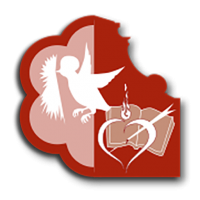Why is the Augustinian Basilica of Florence dedicated to the Holy Spirit? This text edited by Professor Giovanni Cipriani provides the historical origin of the title.
According to the documentary evidence recorded by Domenico Maria Manni, the Augustinians arrived in Florence in 1233. Initially, the Augustinians choose the hill of Arcetri and in particular the locality “Ileperi”, near the village of Pian dei Giullari, as a place of meditation and prayer where the Church of San Matteo in Arcetri would be erected.
There the Augustinians bought land from the Prior of Santo Stefano at the Ponte Vecchio for 200 pounds, paid for by Father Aldobrandino. The land was rich in plants and heavily wooded, it was a perfect setting for the hermitage that soon took the name of Hermitage of S. Matteo di Ileperi or Lepore.
Less than twenty years later in 1250, Father Aldobrandino bought from Spinello Accolti of Borgo S. Jaocpo and Omodeo, del fu Guido, apothecary of the people of S. Jacopo, a house with 10 staiora and a half, with a vineyard in Cuculia (Today the cululia signage marks the corner between Via dei Serragli and Via Santa Monaca). The town was also known as Casellina.
The intention of Father Aldobrandino was to create a community with a church and a convent and the same Omodeo, apothecary, to make the omens even more concrete, donated between days of land in the same place of Cuculia or Casellina in 1251.
In 1269 a community of Augustinian Fathers settled permanently in Florence and the construction of a new church and convent was begun. In the place there was already the church of San Romolo that was incorporated into the new building.
Florence experienced a phase of great expansion in those years. A strong immigration from the countryside changed the face of the city and also the Oltrarno saw an increase in housing and decided to build the new Ponte S. Trinita. During this time, the Augustinian Fathers were financially supported in their effort in various ways. Pope Innocent IV Fieschi, with a special brief, granted the indulgence to those who supported with offerings the production of the sacred building and in 1278 the Countess Beatrice da Capraia disposed a large bequest in her will.
The Church, commonly called the Holy Spirit of Casellina, and the convent arose quickly so that in 1284 there was established the General Study of the Augustinian Order, a center of great importance in terms of theological and philosophical studies, with a copious collection of manuscripts. The prestige of the Augustinian Florentine settlement was now evident and in 1287 its walls housed an important General Chapter of the Order.
The City of Florence itself gave tangible support to the efforts of the Augustinians. Thanks to the purchase of several houses, then demolished, a square was created and in 1295 the City donated 400 pounds, in 1297 “in subsidium opere Ecclesiae Sancti Spiritus Fratrum Eremitarum Sancti Augustini de Florentia” 1200 pounds and again, in 1298 1500 pounds.
The fame of the Convent as a Cultural Centre grew considerably and, thanks to the link with Fra Dionigi di Borgo San Sepolcro, Francesco Petrarca began to frequent Santo Spirito, attracted by the rare texts it contained. The same Fra Dionigi introduced Petrarch to Roberto d’Angiò and thanks to these meetings Petrarch came closer and closer to the figure of St. Augustine so much to choose him as an interlocutor in the “Secretum”, one of the works closest to the poet’s soul.
Giovanni Boccaccio also attended the convent of Santo Spirito and his rich quantity of manuscripts. His interlocutor was Fra Mastino da Signa and it was to the Augustinians of Santo Spirito that Boccaccio left his rich collection of manuscripts. In the fourteenth century Fra Luigi Marsili was a friend and correspondent, as well as Petrarch, of Coluccio Salutati, one of the humanist chancellor of the Florentine Republic.
The City of Florence was increasingly generous and in 1397 the annual allocation of a large fund was decided for the construction of a new and larger Basilica. The amount would be paid every 28 August for the feast of St. Augustine.
Only in 1428, behind the urgent invitations of Francesco Mellini, was a provveditore created to take care of the new factory. Stoldo Frescobaldi, a member of a family still linked to the Holy Spirit, was chosen.
Around 1434 the construction of the new Basilica was entrusted to Filippo Brunelleschi.
The fame of Santo Spirito as a cultural center was increasingly marked. Leonardo Bruni, Poggio Bracciolini, Niccolò Niccoli and Giannozzo Manetti frequented his rooms. After a long project Brunelleschi began the construction of the new complex in 1444. It was the last work of the famous architect who died in 1446. The yard passed into the hands of three of his students: Antonio Manetti, Giovanni da Gaiole and Salvi d’Andrea who, in part, altered the original project.
In March 1471 for the festivities organized in honor of the Duke of Milan Galeazzo Maria Sforza, guest of Lorenzo de’ Medici, a wonderful show was set up in Santo Spirito: the descent of the Holy Spirit. It was directed by Mastro Cecca, famous technician. Above the church choir, anchored to the roof, was a sky of angels moving regularly. The lights were infinite, so much to seem like stars and now they appeared now they disappeared ingeniously. The angels were young men bound so as not to fall that they moved and took hands as if dancing. Around them were clouds of cotton wool and above them was placed the Eternal Father and side Jesus Christ, always surrounded by angels. In the middle she spread her wings a dove to symbolize the Holy Spirit, who sent a rain of fire. As a matter of fact to the Eternal Father, Christ, the Holy Spirit, the angels, the infinite lights and the sweet music that accompanied the representation made Paradise come to life.
Below was an upper room with the Apostles and the Madonna, all illuminated by tongues of fire. At the end of the superb sacred representation the lights were put out, but one remained lit inside a wooden tube and caused a terrible fire during the night. Much of the sacred building was destroyed, with paintings and furnishings. New works were necessary and Salvi d’Andrea made the dome from 1479 to 1481 and the inner facade of 1483 to 1487. Consecrated in 1481, the new Basilica could be said to have ended in 1487. Giuliano da Sangallo, however, made the sacristy in 1489. Even in the tragedy the sacred representation of Mastro Cecca reveals the deep meaning of the sacred building and the message patiently built by the Augustinian Fathers: the salvific value of the Holy Spirit in a constant Pentecost. In fact, the Holy Spirit follows us and guides us towards salvation by putting before our eyes the teachings of Jesus Christ and making them penetrate our souls and minds.
Augustine himself, in his Divote Meditazioni, had well expressed the way of working of the Holy Spirit and his extraordinary importance, invoking him quietly (chap. X).
Prayer to the Holy Spirit
Holy Spirit that all you can and that you are of the afflicted consolor pitiful,
Come down now with your mighty virtue in the most secret of my heart and his darkness,
Merciful inhabitant of that, speak with thy sweet good
and with the abundance of your divine dew fruitful the inner parts of its all.
Already shabby and languishing from the long aridity.
By the sweet flame of thy love kindle the secret parts of the wounded and infirm inner man,
with the ardor of your holy fire penetrating the innermost marrows
and with your most ardent love enlightening me,
fill every most intimate place of my soul and my body.
Come sweet love that purges sins and heals wounds and wounds.
Come, fortress of the weak, and support of the fallen, come, teacher of the humble and destroyer of the proud.
Come loving father of orphans and just judge of widows.
Come hope of the poor and refreshment of the languishing.
Come star of the sailors and port of the castaways.
Come singolar support of all living and unique health of the agonizzanti.
(St. Augustine)
A church dedicated to the Holy Spirit thus fulfilled even more her saving mission, constantly recalling the message of Pentecost and guiding the flock of the faithful, with a firm hand, towards the Kingdom of Heaven. The importance of Santo Spirito in the Florentine devotional context clearly emerged and this makes even clearer the constant intervention of the same municipality of Florence, in favor of the Augustinians, during the thirteenth and fourteenth centuries and subsequently the link with Duke Cosimo I dei Medici who conceived of the world of faith not only as the way of Paradise but the true “instrumentum regni”.


